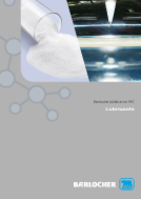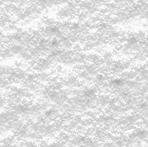external Lubricants
Advantages
- Excellent processibility
- Excellent dispersibility
Applications
Type | BAEROLUB | Chemical composition | Physical form | Melting [°C] | Lubrication |
Solid fatty esters | L-MS | Glycerol partial ester of sturated fatty acids (glyceryl monostearate approx. 40 %) | Powder | 56 - 62 | Internal |
Solid fatty esters | L-CD | Glycerol ester of sturated fatty acids (Castor oil, hydrogenated) | Powder | 84 - 88 | Internal |
Solid fatty esters | GTS | Glycerol ester of sturated fatty acids | Powder | 50 - 54 | Combined |
Solid fatty esters | L-TP | Fatty alcohol phtalate | Powder | 46 - 50 | Internal |
Solid fatty esters | L-PM | Fatty acid ester wax | Powder | 52 - 55 | Combined |
Solid fatty esters | A275 | Fatty acid complex ester and fatty acid Calcium soap | Powder | 125 - 135 | Combined |
Solid fatty esters | 43C | Fatty acid complex ester | Powder Pellets | 59 - 65 | Combined |
Solid fatty esters | LS100 | Fatty acid complex ester | Powder Pellets | 58 - 65 | Combined |
Liquid fatty acid esters | L-PL | Glycerol partial ester of unsaturated fatty | Liquid | liquid at room temp. | Internal |
Liquid fatty acid esters | L-PK | Fatty acid ester | Liquid | liquid at room temp. | Combined |
Solid hydrocarbons | L-KO | Synthetic paraffin wax | Powder | 100 - 105 | External |
Solid hydrocarbons | L-KM | Paraffin wax | Powder | 54 - 56 | External |
Solid hydrocarbons | PA-L | Polyethylene wax | Powder | 102 - 110 | External |
Solid fatty acids, alcohol and amide | FTA | Mixture of fatty acids | Powder | 54 - 60 | External |
Solid fatty acids, alcohol and amide | FTO | Mixture of hydroxy fatty acids | Powder | 70 - 80 | External |
Solid fatty acids, alcohol and amide | L-OH | Mixture of fatty alcohols | Powder | 52 - 54 | Internal |
Solid fatty acids, alcohol and amide | L-AK | Amide wax (N,N'-ethylene distearamide) | Powder | 138 - 144 | External |
Metal soaps | Ceasit SW/PA | Calcium stearate | Powder | approx. 160 | Internal |
Metal soaps | Zincum T | Zinc stearate | Powder | approx. 120 | External |






